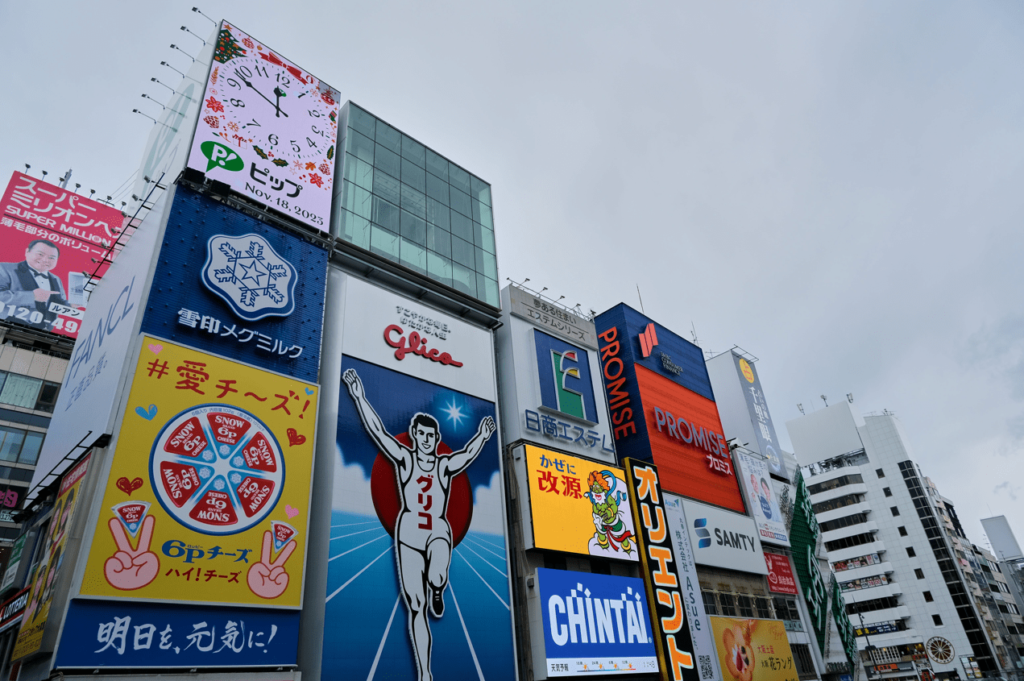How to localise digital advertising campaigns for Japan

Digital advertising represents an incredible opportunity for businesses to reach their target audience in Japan. Companies can set specific parameters to show ads to only their target demographic. Depending on the goals of an ad campaign, different tactics can be used to optimise performance.
PPC ads (pay-per-click ads) are the most common type of digital ad, and they allow businesses to advertise on platforms like Google and Yahoo! JAPAN. For ads to succeed in Japan, budgets, ad copy, and banner images should be customised for each ad campaign. When localising and optimising campaigns, decisions should always be informed by research and data, which is why we perform desk research and workshops with our clients.
During this initial phase, it’s important to fully understand the target audience to ensure the ads will be effective. When advertising in a foreign country, it’s crucial to adjust the ad’s content for the target market. Because of cultural differences, audience preferences, and different levels of international brand recognition, various factors must be considered. This is especially true for the Japanese market where consumer behaviour and cultural norms are infamously unique.
This article outlines key factors to consider when thinking about how to advertise in Japan and introduces our localisation process here at TAMLO.
Digital device preferences in Japan: desktop vs mobile
One significant difference between Japanese and Western audiences is their device preferences. As Nanako Aramaki, TAMLO’s Chief Localisation Officer, puts it:
“In Japan, you often see people glued to their phones during their commute on the train. According to statistics, people in Japan spend less time on the internet per day than in Western countries. This time on the train is one of the few free times they have during the day and one of their only opportunities to browse the internet.”
Which device your ad will appear on plays a huge role in determining the design of the ad. For example, images taken in portrait format will look much better on a mobile device than on a desktop computer. There is less screen space on mobile devices, and both the copy and design of the ad should be adjusted to suit the space available.
“To put it into perspective, smartphone penetration in Japan is around 85%. So, if you don’t optimise your content or website for mobile, you are missing out on many potential customers! That said, older generations still primarily use desktop computers when accessing the internet. If you’re targeting an older demographic, make sure to optimise for desktop and include desktop banner sizes for display ads.”
Japanese consumer preferences
Western audiences value simplicity and brevity; too much information will usually scare away potential customers. In Japan, the opposite is true. According to Nanako, Japanese consumers need as many details as possible to purchase something. They need to understand exactly what they are buying.
“Japanese customers actually appreciate a lot of extra information because they need to learn more about the product before making any purchase decision. They’re used to seeing a lot of text, and they don’t get stressed out looking at a wall of information.”
This difference is why Japanese websites can look overwhelming to most English speakers. While Western audiences are usually looking for bite-sized pieces of information, Japanese customers seek detailed product descriptions, which means Japanese ads contain numerous details. The more information about why customers should buy your product or service you can offer, the better.
Digital advertising is all about messaging: nuance in Japanese
Japanese people generally consume content in Japanese, from Japanese sources. Japan’s English proficiency is very low compared to the rest of the world, and it has worsened over the past 5 years. Unlike in the West, where online content is more multilingual and offers diverse content options, Japanese websites are almost exclusively in Japanese. This means that writing ads in languages other than Japanese won’t be effective. Audiences won’t respond well to a piece of copy that they don’t understand. But this can be a challenge. Translating copy into Japanese is difficult because the language is unique.
There are three writing systems in Japanese: hiragana, katakana, and kanji. Each writing system has different connotations depending on how it is used. For example, words written in katakana are often viewed as ‘cool’ or ‘trendy’, while words written in kanji are more formal and professional. Yukiko Matsuoka, TAMLO’s Ad Strategist, explains:
“If advertisements use too much kanji, they can come across as too formal and people won’t take the time to read it. If they’re written with too little kanji, ads can come across as too casual or simple. There’s a lot of nuance involved, and balancing the tone is one of the difficulties of language localisation in Japanese.”
Another difficulty of localising for Japan is using honorifics appropriately. “It's really difficult to balance talking about features and benefits in copy and trying not to sound like you're talking down to people,” says Nanako. CTAs (calls to action) are a normal part of PPC advertising in English, but commands in Japanese can sometimes sound condescending.
These nuances of Japanese are difficult to navigate without proper guidance, and it’s important to have native Japanese copywriters localise your digital ads.
Digital advertising platforms in Japan: more variety than in 'The West'
Yahoo! might sound like a relic of the past to a Western audience, but to Japanese customers Yahoo! JAPAN is still highly relevant. It is constantly competing with Google to have the highest number of digital users in Japan and the Yahoo! Japan app comes pre-installed on many smartphones sold in Japan. Therefore, Yahoo Ads is an important part of any effective marketing strategy in Japan.
“People use Yahoo! Shopping as an e-commerce platform, or they have Yahoo! credit cards, or, like me, they use their news, transportation, and weather apps on their phone. And every time you go to scroll, there are ads,” says Nanako.
Although Google may be the dominant or, most often, the only search ads platform in the West, companies looking to enter the Japanese market would be doing themselves a disservice if they didn’t include Yahoo! JAPAN in their advertising strategy. 66% of Yahoo! JAPAN users are over 40 and 60% of all users are company employees, making it a good option for businesses targeting older decision makers.
Experts who know the platform’s intricacies can help companies streamline the process.
TAMLO's process for localising PPC ads
TAMLO will typically start by organising a digital strategy workshop to onboard new clients. “During the marketing workshop, we get to learn about their brand. It’s crucial to find out the client’s goals and expectations, what their KPIs are, and what their global brand strategy is already,” says Nanako. Digital advertising should always go hand-in-hand with a larger strategy.
The first step in the localisation process is researching the target segment in Japan. For content creation and PPC ads, that means conducting audience research and identifying the right SEO keywords. Even in the early stages of a campaign, it’s important to have Japanese speakers working on the project: the SEO keywords will be impossible to predict if nobody on the team speaks the language.
Following research, the TAMLO team then gets to work creating ad copy that sounds natural and fits the preferences of the Japanese audience. (Read our article on how TAMLO localises written content for a more detailed look at our process).
“Many of our team members are bilingual or have lived abroad, and they can adapt global messaging into Japanese copy that sounds natural and has an appropriate tone for the target audience,” says Nanako. “What makes us different is we have copywriters. We’re not just PPC management professionals or translators; our main service is content. We are content creators,” says Nanako.
To learn more about the kind of work we do to localise digital advertising and the kind of PPC services TAMLO offers, read the case study about our work for ConvaTec, a market leader in medical products.
To get in contact with us, please send us an inquiry on our website here.





